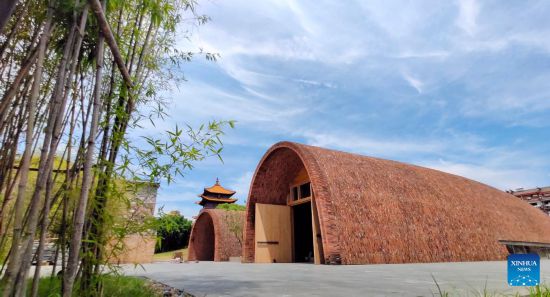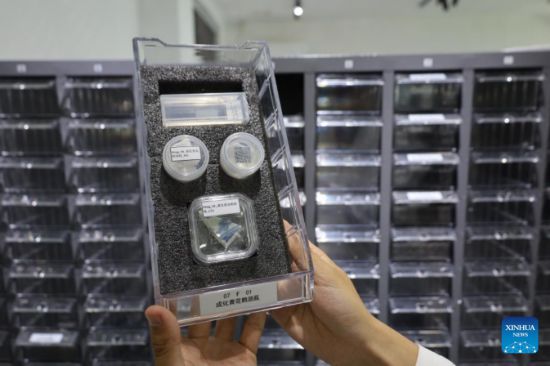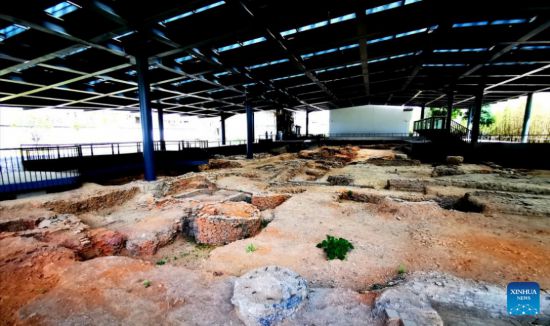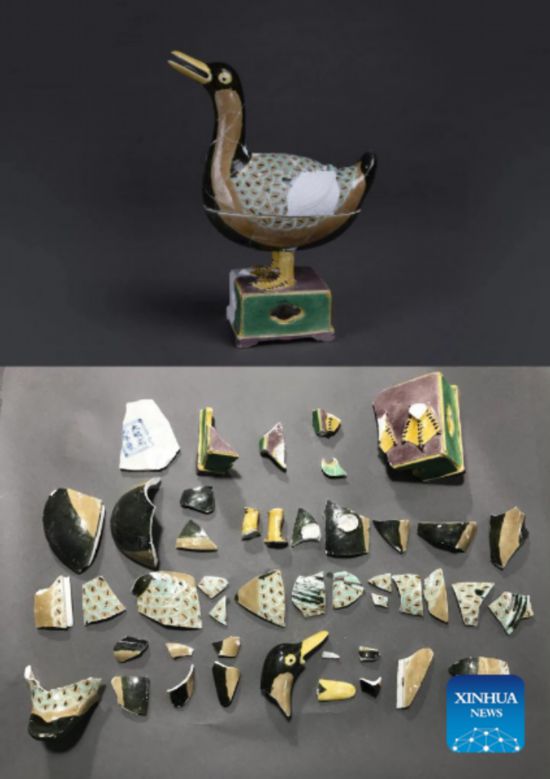China to build "gene bank" of ancient ceramics

Combined file photo shows the restoration process of a ceramic seat from the Ming Dynasty (1368-1644) at Jingdezhen Imperial Kiln Institute in the city of Jingdezhen, east China's Jiangxi Province. (Xinhua)
NANCHANG, June 11 (Xinhua) -- China will establish a "gene bank" of ancient ceramics in east China's Jiangxi Province, based on data from nearly 20 million pieces of ceramics specimens accumulated in some 40 years, authorities announced Saturday.
Over a hundred pieces of "gene" information can be traced through just a piece of ancient ceramic fragment, offering details about the body, glaze, pigment, to name a few, said Weng Yanjun, president of the Jingdezhen Imperial Kiln Institute in the city of Jingdezhen, a world-famous "porcelain capital."
According to Weng, it is also expected to restore the firing process and raw material formula of ancient ceramic specimens.
Researchers will use X-ray fluorescence analyzer and other modern sophisticated equipment to make "gene" specimens with both the physical and digital forms. It is scheduled to complete the first batch of nearly 10,000 ancient ceramics specimens in just a year and a half.
"After the completion of the gene bank, we'd like to share the data with academic institutions at home and abroad, to foster research projects on global ceramics civilization, and build an international platform for ceramics culture exchange," said Weng.
The gene bank will be co-built by the Jingdezhen Imperial Kiln Institute, Peking University, Tsinghua University, the Palace Museum and the Shanghai Institute of Ceramics under the Chinese Academy of Sciences.

Photo taken on June 8, 2022 shows a staff member displaying a specimen of ceramics from the Ming Dynasty (1368-1644) at Jingdezhen Imperial Kiln Institute in the city of Jingdezhen, east China's Jiangxi Province. (Photo by Wang Kaifeng/Xinhua)

Undated photo shows the exterior view of the Jingdezhen Imperial Kiln Museum in Jingdezhen, east China's Jiangxi Province. (Xinhua)

Photo taken on June 8, 2022 shows a staff member displaying "gene" specimens of ceramics from the Ming Dynasty (1368-1644) at Jingdezhen Imperial Kiln Institute in the city of Jingdezhen, east China's Jiangxi Province. (Photo by Wang Kaifeng/Xinhua)

Undated file photo shows the site of the kiln relic in Jingdezhen, east China's Jiangxi Province. (Xinhua)

Combined file photo shows a restored three-colored duck-shaped incense burner (top) from the Ming Dynasty (1368-1644) and its relics before restoration at Jingdezhen Imperial Kiln Institute in the city of Jingdezhen, east China's Jiangxi Province. (Xinhua)
Photos
Related Stories
Copyright © 2022 People's Daily Online. All Rights Reserved.









